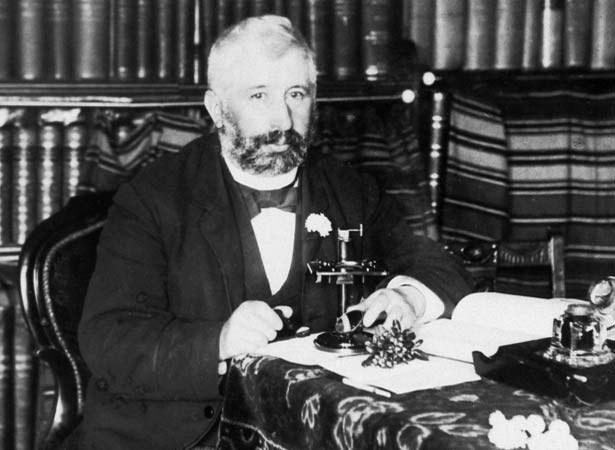
Thomas Hocken’s priceless legacy of historical material is the most important collection outside Crown ownership in New Zealand. Its former owner ranks alongside the country’s two other famous collectors and benefactors, Sir George Grey and Alexander Turnbull.
Like many others, Dr Thomas Morland Hocken was drawn to Dunedin during the Otago gold rush, in 1862. He made his living as a general practitioner and coroner rather than by panning alluvial soils; and the treasure he sought was not gold, but ethnological artefacts and printed material relating to New Zealand’s history.
Over the course of his life, Hocken amassed a personal collection of some 4300 printed volumes, plus numerous maps, newspapers, diaries, pamphlets, photographs and pictures relating to the history and settlement of New Zealand, Australia and the Pacific, with a particular emphasis on the southern South Island and missionaries.
In 1897 Hocken announced his wish to donate his entire collection to the people of New Zealand, provided a suitable building was erected in Dunedin to house it. This generous offer was not embraced until 1906, when a public subscription campaign raised £2800 (equivalent to nearly $500,000 today), which was matched pound-for-pound by a government subsidy. The University of Otago accepted Hocken’s gift in 1907, and on 31 March 1910 the Hocken Wing of the university’s museum was formally opened by the governor, Lord Plunket. The cancer that was to claim Hocken’s life less than two months later prevented him attending the ceremony.
Read more on NZHistory
The collectors: Grey, Turnbull and Hocken – New Zealand Library Week
External links
How to cite this page
'Hocken Library opens at Otago Museum', URL: https://nzhistory.govt.nz/page/hocken-library-opens-otago-museum, (Ministry for Culture and Heritage), updated 8-Oct-2020

Community contributions